It is striking that in the Canary Islands there is not as much interest in collecting mushrooms as on the mainland, although in recent years there have been more and more nature lovers, hikers and gastronomy enthusiasts who have taken up the noble science of mycology. Despite this certain increase in the pressure on the islands' forests, it is precisely this scarce fondness for collecting mushrooms that is very much appreciated in the Canary Islands, as thanks to this lesser pressure it is easier to find them, and they can grow to a larger size than usual. In fact, more than 500 species have been dated in the archipelago. This time we are going to look at mushrooms in Tenerife, an island with very good conditions for the mycology hobby.

Mushrooms in Tenerife: the pine forests and undergrowth
Autumn arrives and the rainy season arrives in the pine forest, a particularly ideal habitat for mushrooms in Tenerife, providing an ideal substrate for them, as well as in areas of woodland mixed with broom and heather and areas of undergrowth with ferns, rockrose bushes and other species. Mushrooms are an exquisite natural food, the only thing we recommend is that if you are not sure whether a mushroom is edible or not, do not hesitate for a second: discard it or ask an expert. Here we show you the most typical edible species of Tenerife:
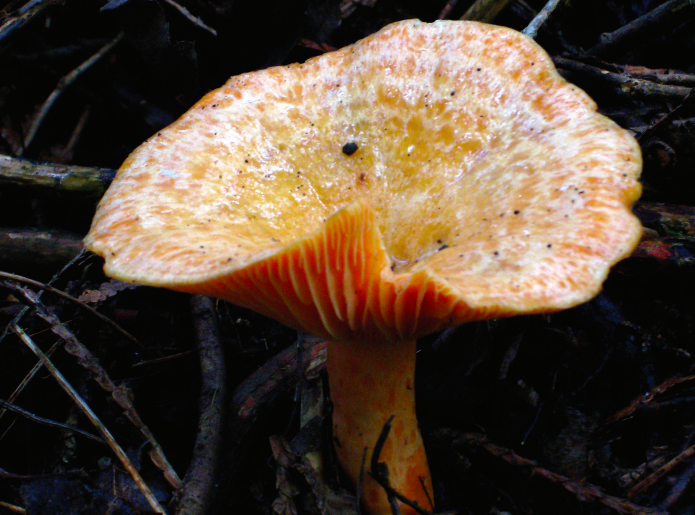
Chickling vetch ( Lactarius deliciosus)
Highly appreciated for its wonderful flavour, we can find chanterelles between the beginning of autumn and the beginning of winter; it is present in pine forests and in areas of bushes with rockroses, and it is classified as excellent edible. The traditional chanterelle has an orange cap, which with age will have more or less greenish areas, and is perfect to accompany any type of meat.
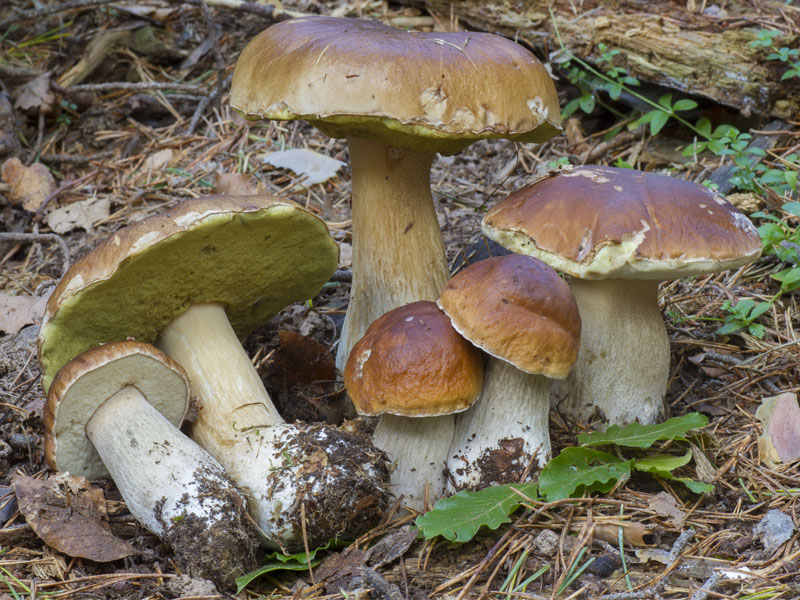
Common boletus or Bordeaux mushroom (Boletus edulis)
The boletus of the island of Tenerife are famous for their size, a few years ago a 5.1 kg boletus was harvested in Tenerife. The trick is that on the island there is less pressure on the mushrooms (there are fewer pickers), and the boletus have time to grow. Qualified as a superior gastronomic category, its location will depend to a greater or lesser extent on the time of year and rainfall. The ideal time to harvest boletus is at the end of autumn and throughout the winter. The most abundant area for boletus is in the north of the island, in pine forests, in acidic soils in general, with a more generous rainfall. Very fleshy, with a very thick stem, brownish-brown colour, with a hemispherical cap that becomes convex. Flat underneath. Undoubtedly the star of mushrooms in Tenerife.
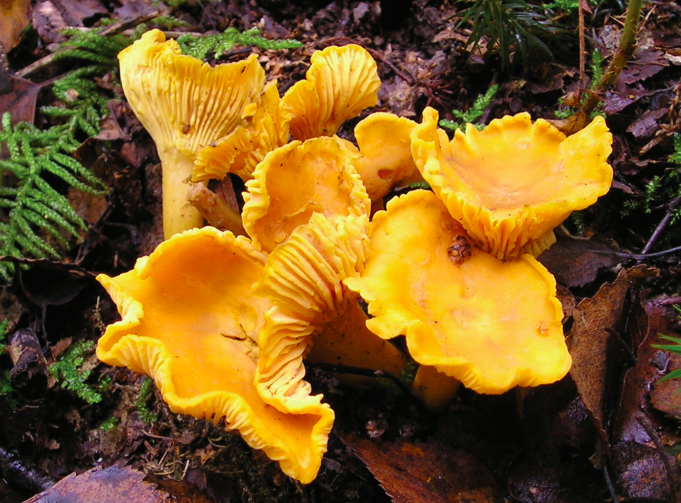
Chanterelle (Cantharellus cibarius)
If you see a chanterelle in Tenerife, you are probably walking through an area of chestnut trees. The chanterelles form mycorrhizae with the roots of these trees, and have a strong yellow colour, with many folds and a foot that narrows towards the base. The cap is up to 12 cm long, and the flesh is thick, very firm. In general, they are very easy to identify. Qualified as an excellent edible, with a sweet taste, reminiscent of apricot, like the other mushrooms, it is also found between autumn and winter, and some people even make very aromatic alcohol with it, the chanterelle liqueur. It is undoubtedly one of the most delicious mushrooms in Tenerife, and is probably the most consumed mushroom.
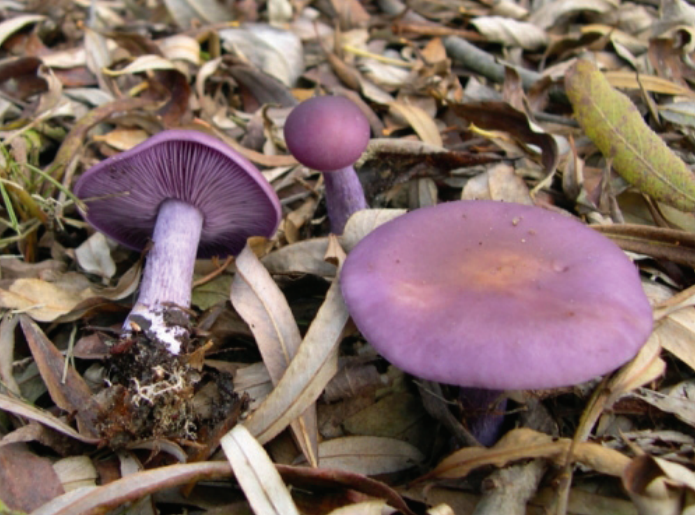
Pistonuda(Lepista nuda)
With a strong flavour, the pistonuda owes its popular name to a similarity with its scientific nomenclature. It can be found in autumn and winter. With a hard, fleshy cap up to 20 cm in diameter, very fleshy and with a fruity smell and sweet, aniseed-like flavour, the pistonuda is very abundant in mixed pine forests. Its colour varies, when young it has a bluish, lilac or purplish tone at the base, which becomes brownish with age. It can sometimes be found forming witches' nests. It is considered a very good edible plant.
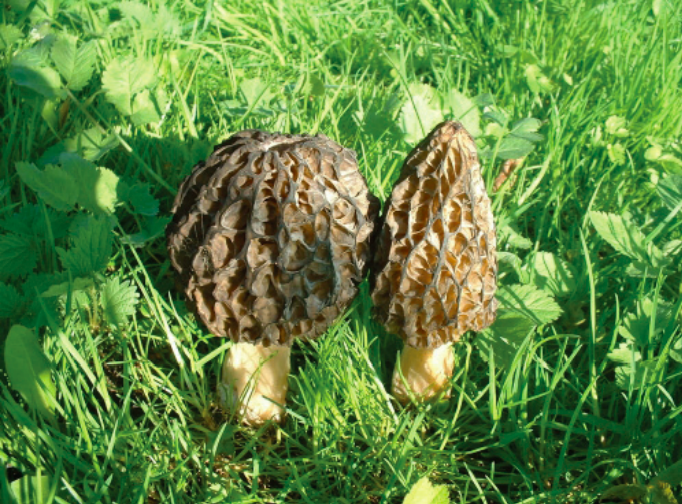
Morel mushroom (Morcella esculenta)
In autumn it will be difficult to find morels, but in winter and early spring they can be seen on the island of Tenerife in the greenest areas. They have a cylindrical, honeycomb-shaped cap (the alveoli), are considered an exquisite foodstuff and can be confused with other species. They cannot be eaten raw, and are highly prized by chefs in France and Spain. Their fragile flesh, texture and aroma are very sweet, perfect for sauces.
... and poisonous mushrooms of Tenerife
Of course, it is important to know very well which mushrooms are poisonous, which ones we should never take, to know how to distinguish those with similar characteristics from other edible mushrooms and never hesitate when faced with a poisonous mushroom.
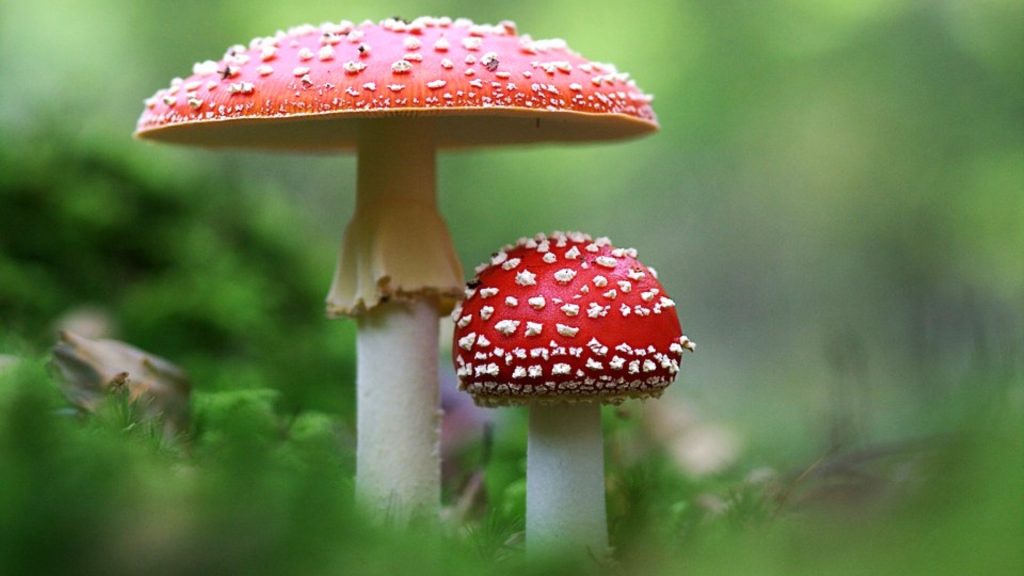
In the Canary Islands we will name only two species that are poisonous, two amanitas: the fly agaric ( Amanita muscaria) and the panther amanita (Amanita pantherina), which, although not fatal, cause digestive disorders, diarrhoea, hallucinations and other ailments. Both are also found among the mushrooms of Tenerife, although they are very easy to identify.
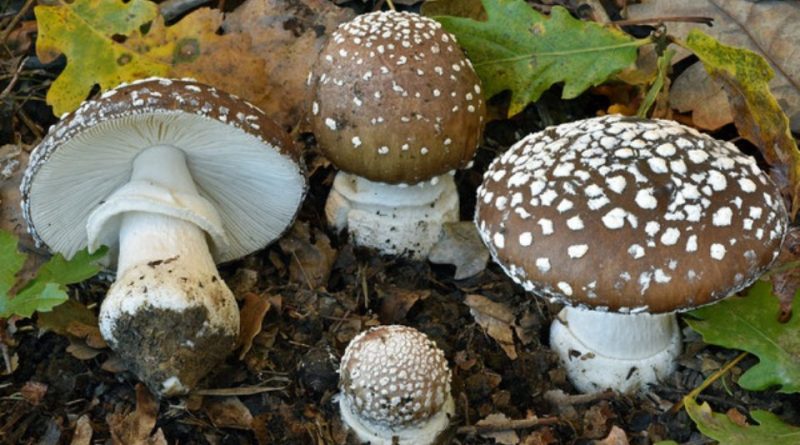
Photos: antropocene.it, oliveryanes.com, cesta-de-setas.com.



